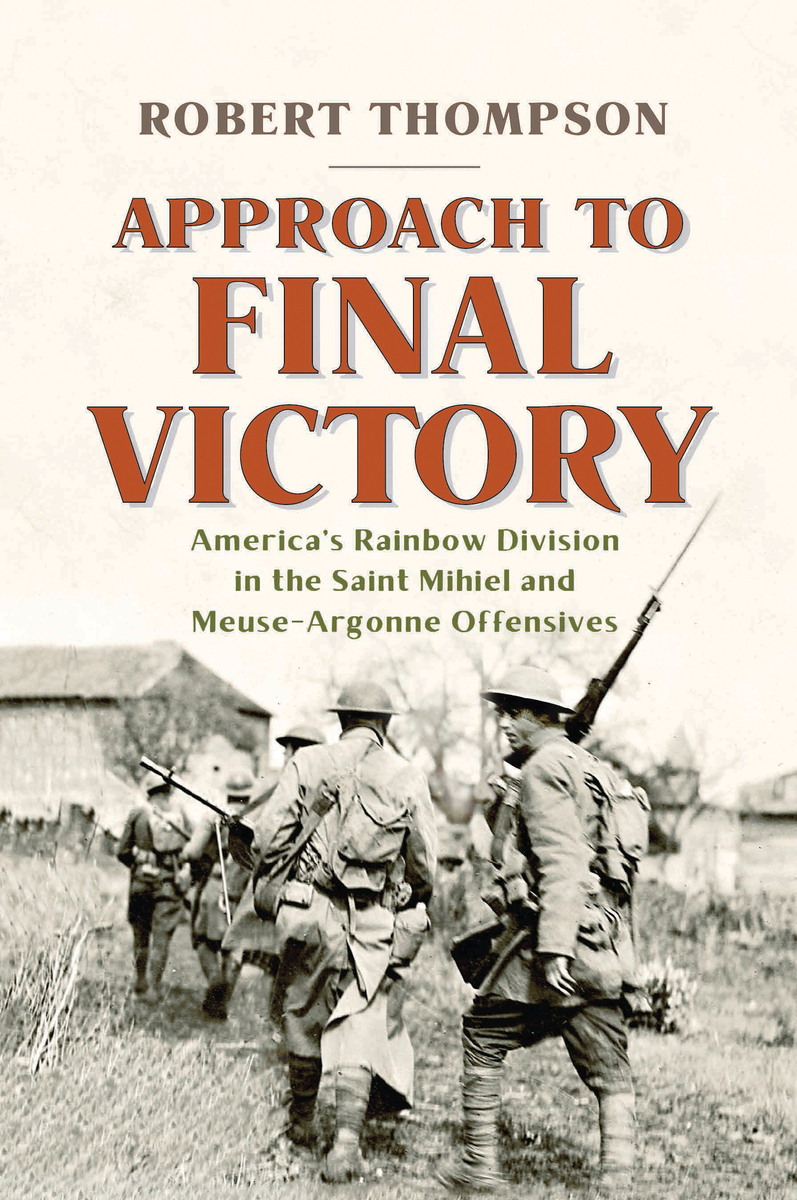Approach to Final Victory: America's Rainbow Division in the Saint Mihiel and Meuse-Argonne Offensives
Westholme Publishing, 2023
eISBN: 978-1-59416-705-8 | Cloth: 978-1-59416-409-5
See other books on: America's Rainbow Division | Approach | Strategy | Thompson, Robert | World War I
See other titles from Westholme Publishing
eISBN: 978-1-59416-705-8 | Cloth: 978-1-59416-409-5
ABOUT THIS BOOK | AUTHOR BIOGRAPHY | REVIEWS
ABOUT THIS BOOK
The 42nd Division, or “Rainbow Division” as it was known popularly, was composed entirely of unproven National Guard units hailing from twenty-six different states and the District of Columbia. For that reason, there were many who thought the division would never see combat when it deployed to France in October 1917. However, the division would spend 164 days in combat during World War I, a number exceeded by only two other American divisions. Despite the doubts of General John J. Pershing and many senior American officers regarding their ability to serve in combat, the division would come to be viewed by the Allies and their German opponents as one of the best combat divisions in the American Expeditionary Forces. As a result, the Rainbow Division was chosen to lead the American offensive in the Saint Mihiel salient, the first offensive planned and led by the American army in World War I. The division went on to play a critical role in the final offensive of the war in the Meuse-Argonne, where these battle-hardened National Guardsmen were the first Allied unit to finally break through the main German lines of resistance, the heavily fortified Kriemhilde Stellung, which had stopped assaults by three other American divisions.
Approach to Final Victory: America's Rainbow Division in the Saint Mihiel and Meuse-Argonne Offensives by historian Robert Thompson, chronicles the efforts of the Rainbow Division during these final two Allied offensives that were key to the ultimate Allied victory. Based on letters, journals, action reports, and unit histories, the challenges, set-backs, and accomplishments of the division stand as a fitting symbol of American valor and sacrifice during the “war to end all wars.”
Approach to Final Victory: America's Rainbow Division in the Saint Mihiel and Meuse-Argonne Offensives by historian Robert Thompson, chronicles the efforts of the Rainbow Division during these final two Allied offensives that were key to the ultimate Allied victory. Based on letters, journals, action reports, and unit histories, the challenges, set-backs, and accomplishments of the division stand as a fitting symbol of American valor and sacrifice during the “war to end all wars.”
See other books on: America's Rainbow Division | Approach | Strategy | Thompson, Robert | World War I
See other titles from Westholme Publishing



